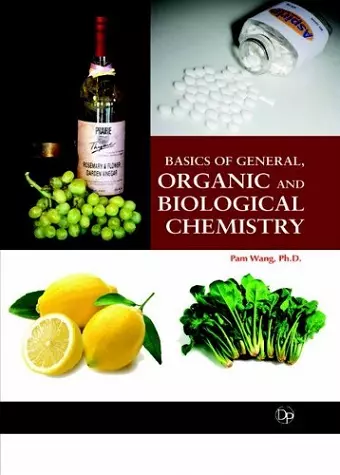Basics of General, Organic, and Biological Chemistry
Format:Hardback
Publisher:Delve Publishing
Published:30th Nov '16
Should be back in stock very soon

Chemistry is a physical science that studies the properties and activity of matter, as well as its interactions with other matter and energy. Classically, matter is found in one of three states—solid, liquid, or gas—and is made up of units known as atoms. Atoms are microscopic particles (typically between 100 and 500 pm in diameter) that consist of nucleons (protons and neutrons) and orbiting electrons; they can be neutral or ionized (ions), depending on the relative number of positively charged protons and negatively charged electrons. Elements in the Periodic Table are identified by the number of protons they possess in their atomic form. Under appropriate conditions, attractive forces can draw atoms towards each other, creating a chemical bond – the most well known types of which are ionic, covalent, dative, and metallic. Once these chemical bonds are formed, the resulting groups of atoms are referred to as molecules (covalent), complexes (dative), or lattices (ionic or metallic). Molecules can in turn be attracted to each other through intermolecular interactions, such as dipole-dipole, hydrogen bonding, Van der Waals, and cation-pi. The strength of these intermolecular interactions largely dictates the state (solid, liquid, or gas) of a compound at a given temperature, as well as its solubility in a given solvent.
The law of conservation of energy and the law of conservation of mass are two fundamental physical principles that lie at the heart of chemical reactivity. Reactions are commonly described by chemical equations, from which stoichiometry and thermodynamic parameters can be derived. Empirically measured reaction rates can also be used to obtain information on reaction kinetics, including rate constants and activation energies. For reversible reactions, equilibrium is defined as the point at which the forward and reverse reaction rates are equal. The effect of a change in conditions on a chemical equilibrium is predicted by Le Chatelier’s principle, which states that when a change (e.g. in concentration or temperature) is introduced to a system, the system will adjust itself to counteract that change, thus creating a new equilibrium. Catalysts are agents that lower the activation energy of a reaction and increase the rates of both the forward and reverse reactions (hence do not change equilibrium positions). Organic chemistry is a branch of chemistry that studies the...
ISBN: 9781680959017
Dimensions: unknown
Weight: unknown
292 pages